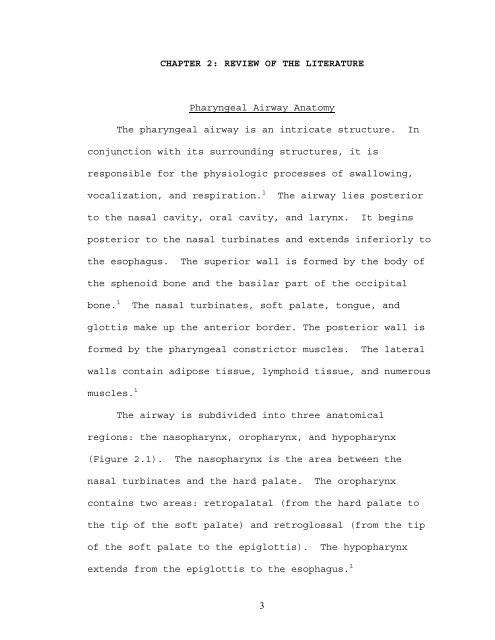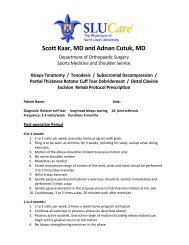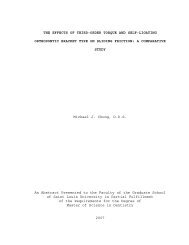PHARYNGEAL AIRWAY VOLUME FOLLOWING ...
PHARYNGEAL AIRWAY VOLUME FOLLOWING ...
PHARYNGEAL AIRWAY VOLUME FOLLOWING ...
You also want an ePaper? Increase the reach of your titles
YUMPU automatically turns print PDFs into web optimized ePapers that Google loves.
CHAPTER 2: REVIEW OF THE LITERATURE<br />
Pharyngeal Airway Anatomy<br />
The pharyngeal airway is an intricate structure. In<br />
conjunction with its surrounding structures, it is<br />
responsible for the physiologic processes of swallowing,<br />
vocalization, and respiration. 1 The airway lies posterior<br />
to the nasal cavity, oral cavity, and larynx. It begins<br />
posterior to the nasal turbinates and extends inferiorly to<br />
the esophagus. The superior wall is formed by the body of<br />
the sphenoid bone and the basilar part of the occipital<br />
bone. 1 The nasal turbinates, soft palate, tongue, and<br />
glottis make up the anterior border. The posterior wall is<br />
formed by the pharyngeal constrictor muscles. The lateral<br />
walls contain adipose tissue, lymphoid tissue, and numerous<br />
muscles. 1<br />
The airway is subdivided into three anatomical<br />
regions: the nasopharynx, oropharynx, and hypopharynx<br />
(Figure 2.1). The nasopharynx is the area between the<br />
nasal turbinates and the hard palate. The oropharynx<br />
contains two areas: retropalatal (from the hard palate to<br />
the tip of the soft palate) and retroglossal (from the tip<br />
of the soft palate to the epiglottis). The hypopharynx<br />
extends from the epiglottis to the esophagus. 1<br />
3

















